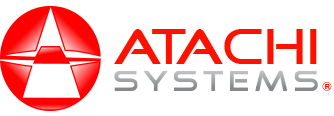12 Oct Lowering TCO matters to everyone
For a manufacturing business, lowering a product’s total cost of ownership (TCO) can be a major selling point to a customer. By creating a piece of technology that is affordable throughout the life of its use, a company can build client loyalty and showcase its reliability. Consumers want to know exactly what they are buying, and knowing how much maintenance or upgrades will cost over the course of a product’s use matters a lot.
There are several factors that go into lowering TCO. A tech manufacturer that wants to emphasize its products as valuable over their entire life of ownership will want to determine the best ways for decreasing their costs. At the same time, it is vital to develop a piece of equipment that is superior to what competitors are offering, so that a product is worth buying in the first place.
Understand the value of lowering TCO and how cloud software can impact a manufacturer’s productivity can improve a business.
Know how ownership cost is calculated
To lower TCO, it is important to understand where costs are coming from. For example in the world of data storage, Hitachi Data Systems explained that they deal with 34 types of money. These range from the yearly costs of hardware depreciation, which added up over time can be a major impact on ownership cost, to the amount a customer will spend to purchase backup infrastructure. The various ways a client may have to spend, or see its investment lose value, all play a role in a product’s overall TCO. Additionally, not all 34 types have the same value or relevance; a company may only be impacted by five of the variables when purchasing a data storage product.
“To lower TCO, it is important to understand where costs are coming from.”
Manufacturing also has its different types of payment, with some areas of the field having a larger impact than others. Knowing the types of costs that could most affect a customer, or where depreciation will take place within a product, impacts its cost of ownership. Conquest Associates recommended looking at direct and indirect costs to determine the various types of money that could lower a product’s cost. Direct costs include the purchase prices of hardware and software, as well as paying for labor. Indirect costs are deductions that the buyer incurs as a result of the purchase, such as paying training to use the new product.
Ownership cost also is impacted by a buyer’s business model. If their purchase of a manufacturing product is to help grow income long-term, then a dollar today may not be worth as much as a dollar one year down the road. However, if the product is aimed at making an instant impact, upfront costs will matter more than decreasing ownership value down the road. These differences matter when calculating ownership costs.
Where the cloud helps
Cloud software measures and analyzes TCO. By evaluating different variables, the software can monitor depreciation and determine the overall cost of a product. Within cloud computing, resources are delivered instantaneously, so assets can be measured in real time. That can lead to greater savings, as insights to lower costs can be generated before depreciation or problems take place.
Rackspace explained that cloud software can also measure how efficient a product is being. If a business is using just 75 percent of a product’s capacity 90 percent of the time, it is not utilizing everything the technology has to offer. That means it is not receiving everything that it’s paying for, which impacts TCO.
Manufacturing businesses want TCO to be lowered because of the value it provides to customers, as strong products that keep costs down often times lead to repeat customers. Buyers of those products obviously want decreased ownership costs as well, as it saves them money over time. Investing in cloud technology helps both parties determine how finances are calculated and measured, as well as increasing savings both short and long term.
